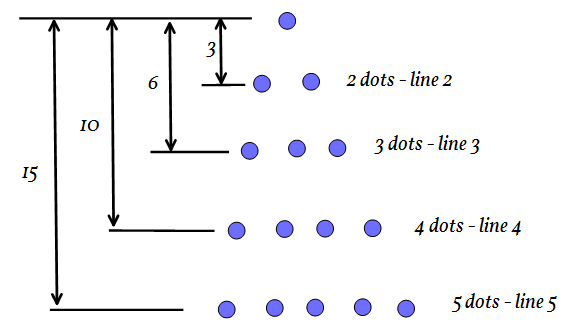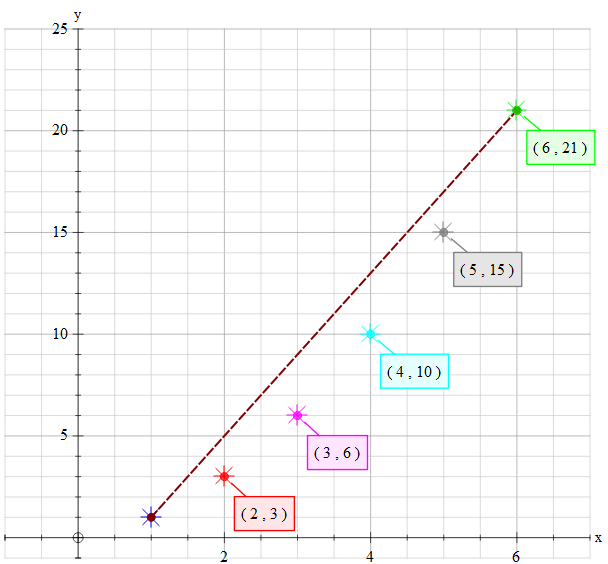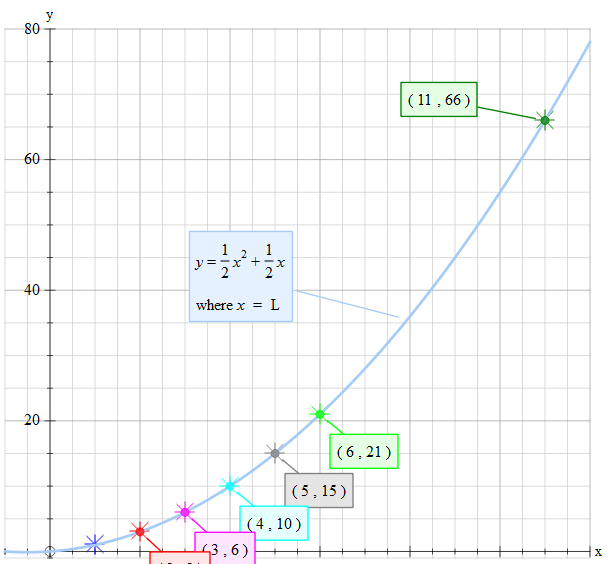Question #1d0d6
2 Answers
Also see part 2 of 2 for the calculation method
If you use a strait line of best fit you can not be precise enough to satisfactorily predict values.
Explanation:
Triangular numbers are constructed as in the diagram.

You add up all the dots from the first one down to whichever point you wish to stop.
The

See part 1 of 2 first before reading this one.
Explanation:
The sequence is
Notice that the last value in the sum is the term number or line number.
~~~~~~~~~~~~~~~~~~~~~~~~~~~~~~~~~~~~~~~~~~~~~
Consider any one of the rows
Let the first value be
Let the last value be
Then the sum of any row is
count
but
Changing the order we have:
Compare this to the standardised equation of a quadratic
so if


